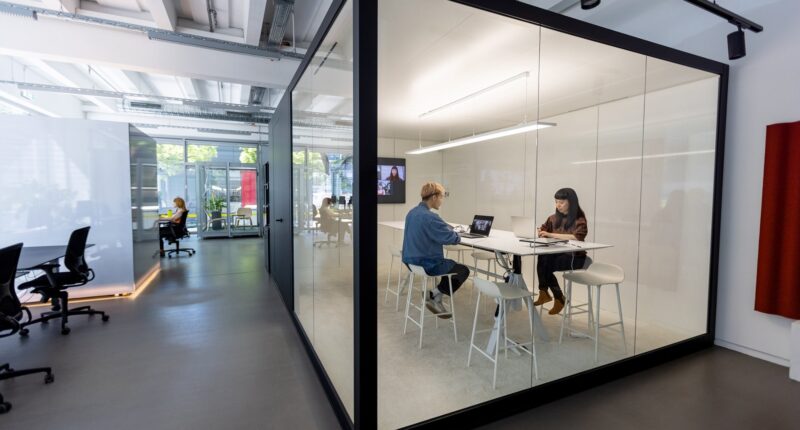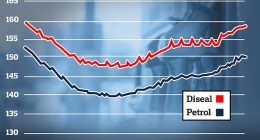
Opinions expressed by Entrepreneur contributors are their own.
Let’s all cross our fingers and hope that the worst of the pandemic is behind us. Now that we’ve done it, let’s talk about what the “new normal” will look like.
In the back office and out on the floor, the seismic shifts that have rocked businesses for the past three years are finally starting to stabilize. Here is how the major trends for spending and staffing are likely to shake out.
Related: Inflation Doesn’t Differentiate, But Its Impact Does
Farewell to spending swings
For much of the pandemic, people focused their spending on goods that could be delivered to and consumed in their homes. Going out wasn’t really an option, and even when it was, there were risks and limitations — so they ordered takeout and saved their money for better days.
Those better days came last spring. With arms full of boosters and bank accounts full of savings, consumers left their homes in huge numbers to partake of restaurant meals, concerts, sporting events, and flights to sunnier climes. It was an economy-shifting combination: pent-up demand for services, a desire to get “revenge” on the pandemic and oodles of cash.
The result was an unprecedented shift in spending that caught even the biggest retailers flatfooted. They had seen demand for their products ramping up month after month. Supply chains were straining under the weight of record orders. But then all those dollars shifted into services, and inventories started stacking up.
Retailers found themselves with more goods than they needed. Pressure on supply chains started to wane, and by the fourth quarter of the year, supply chains felt much as they had in February 2020, just before the pandemic took hold. Orders for the holiday season were down since retailers had to sell the goods they already had first.
Almost all of this will be different in 2023. Facing an economic downturn, consumers usually dial down their spending on non-essentials like graduation parties and trips to theme parks. And while there are still some reports of “you only live once” travel, much of the pent-up demand for leisure and hospitality services has likely dissipated.
Related: How to Boost Sales When Consumers are Spending Less
Moreover, a huge chunk of the savings that consumers ponied up for these services has disappeared. Researchers at the Federal Reserve estimated that households built up more than $2 trillion in excess savings — money they wouldn’t have saved under normal conditions — during the first 18 months of the pandemic. As of October, about a quarter of that money had been spent and the saving rate had dropped below its pre-pandemic levels.
With the stock market well off its highs, record interest rates on credit cards, continuing rapid inflation and holiday spending changes, much more of those excess savings will be gone by the time spring rolls around again. It’s hard to imagine that services delivered outside the home will experience the same surge in 2023 as in 2022, so the balance between spending on goods and services throughout the year is likely to be much more similar to what it was before the pandemic.
Hello to the new workplace — even for in-person workers
Just as spending habits are likely to stabilize, so will employees’ preferences for work. Clearly, the pandemic accelerated a long-term trend toward remote work. Now some businesses have decided to stick with fully remote work, while others have settled on a hybrid model for the long term. The demand for costly office space has declined dramatically and permanently, as has the demand for all the services that workers need in the vicinity of these offices.
This new reality has also created a geographical shift in spending. Remote work has triggered a huge transfer of revenue from cities to suburbs. Much of the money that office workers brought to urban lunch counters, hair salons, public transport systems and the like is now staying closer to their homes.
As a result, workplaces may move for in-person workers, too. But the warehouse associates, food servers and cleaners who find flexible shifts on my company’s platform still can’t work from home. Their pay rose early in the pandemic, and justifiably so; they were taking extra risks by going to work. Now the risks may not be so great at work, but there are enduring pressures at home.
Child care has become more expensive and harder to find, and the pandemic has led to a shortage of home care as well. Because breadwinners have more responsibilities outside of work, they need more flexibility when they work in person. And this is the key to one of the biggest changes in the labor market.
Until the pandemic, companies used flexible work as a way to top off their labor supply, booking workers for extra shifts when demand for their goods and services peaked. But now, flexible work is becoming part of core payrolls.
Earlier this year, I visited a business partner that had built up a roster of our Pros to book every week, essentially for full-time positions. The shifts always got filled, but not always with the same Pros. It worked. The managers were happy to have a deep pool of trained Pros who could fill all the required shifts, with no missed days — something they wouldn’t have had with a fixed number of permanent employees — and the Pros were glad that they could take time off whenever they wanted.
The trend for greater flexibility in all kinds of workplaces will help to stabilize large swaths of the economy, too. For businesses, having a steady supply of labor helps to keep production running smoothly. For consumers, being able to fine-tune their incomes helps to reduce fluctuations in spending. There are still some headwinds and risks facing the economy in 2023, but the watchword after three years of tribulation may finally be: stabilization.
This article is from Entrepreneur.com







